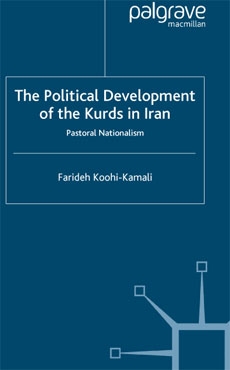Contents
List of Tables / ix
List of Maps / x
Preface / xi
Maps / xii
Introduction / 1
1 The Kurds and Kurdistan / 24
Introduction / 24
A brief background to Kurdish national history / 28
The Kurds in Iran / 31
2 The Political Economy of Kurdish Tribalism / 44
Introduction / 44
Kurdish tribes in the early decades of the twentieth century / 45
Why tribes settle / 49
Sedentarization 50
The economic impact / 53
Sedentarization in Iranian Kurdistan / 55
Change / 58
Differentiation and new groups / 59
Continuity / 62
Conclusion / 65
3 Nationalism or Tribalism? Simko’s Revolt / 66
Introduction / 66
Tribes and the state in Iran / 67
Kurdish tribal development up to the twentieth century / 69
Tribes and the non-tribal population / 70
Emergence of Pan-Islamism and nationalism in the region / 71
Simko’s revolt / 74
What were Simko’s motives and goals? / 82
Simko’s limitations as a nationalist leader / 83
Conclusion / 88
4 The Kurdish Republic in Mahabad / 89
Introduction / 89
The situation in Iranian Kurdistan during the early 1940s / 91
The Kurdish issue and the Great Powers / 94
The Kurdish Republic: the factors which made it a national movement / 97
Political preparations / 99
The achievements of the Republic / 111
The downfall of the Republic / 116
The story of the Barzanis / 121
Conclusion / 122
5 The Political Economy of Kurdish Nationalism / 126
Introduction / 126
Transition to a national community / 129
Inequality within Kurdistan / 142
Inequality between Kurdistan and Iran / 156
Conclusion / 162
6 Kurdistan from the 1946 Republic to the 1979
Revolution and the Islamic Republic / 165
Introduction / 165
The situation in Iranian Kurdistan between 1946 and 1979 / 168
Kurdish nationalism on the eve of the 1979 revolution / 171
Pastoral nationalism vis-a`-vis Kurdish communism: the KDPI and Komala / 173
The demands for Kurdish autonomy and the Islamic Republic of Iran / 184
The Iran–Iraq war / 190
The situation of the KDPI since the Iran–Iraq war / 192
Conclusion / 193
Conclusion / 197
Epilogue: the Situation of the Kurds in Iran and Neighboring Countries, 2002 / 210
Notes / 221
Bibliography / 237
Index / 245
List of Tables
1.1 Population / 27
2.1 Herd growth in western Sudan, 1974 / 54
2.2 Village population in Kurdish towns in Iran, 1851–1951 / 56
5.1 Agents’ purchase of peasants’ produce / 130
5.2 Sale of peasants’ produce by method of sale / 130
5.3 Distribution of migration of landless and landholding peasants / 132
5.4 Distribution of landlesss and shareholding peasants / 133
5.5 Birthplaces of heads of households and their fathers / 135
5.6 Geographic mobility of heads of households / 135
5.7 Occupation mobility among peasant households / 136
5.8 Occupations of heads of landless households whose fathers were farmers / 137
5.9 Urban and rural population, 1955–93 / 138
5.10 Distribution of landless laborers, by preferred type of radio program / 141
5.11 Distribution of landholding peasants by preferred type of radio program / 141
5.12 Land owned by peasant families after the Land Reform / 144
5.13 Distribution of types of peasant families by size of land ownership / 146
5.14 Household size in relation to household income / 147
5.15 Distribution of heads of landless households and their fathers, by occupational category / 150
5.16 Distribution of heads of peasant households, by occupation / 152
5.17 Distribution of sampled rural households by annual expenditure, Kurdistan and all Iran / 154
5.18 Distribution of sampled urban households by annual expenditure, Kurdistan and all Iran / 155
5.19 Ranking of provinces by average food share, 1983–84 / 159
5.20 Ranking and distribution of illiterate urban population 6 years of age and over by province, 1981–82 / 161
List of Maps
1 Kurdistan: principal districts and locations / xii
2 Distribution of Kurds across Turkey, Iran and Iraq / xiii
3 Principal Kurdish tribes / xiv
4 Kurdish languages / xv | 